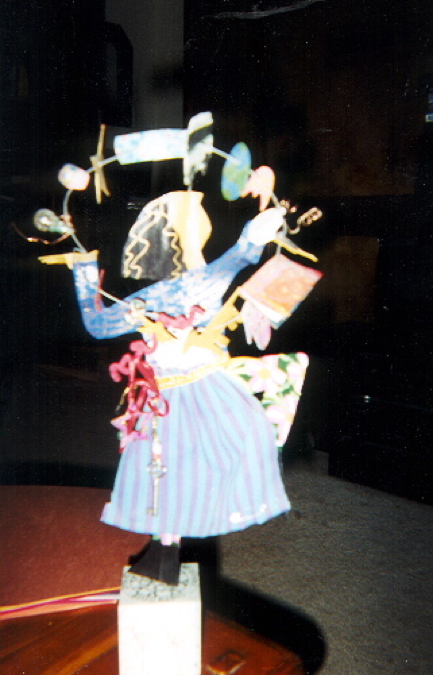Tom Hébert
I am looking forward to presenting Creating Positive Social Emotional Environments for Smart Kids, a new strand for Confratute 42.
In this strand we explore guidance strategies to support the social and emotional development of bright students. One of my favorite strategies is using photography to explore identity development.
I ask my students to respond to the following simple prompt: "Using your cell phone camera, shoot 5 pictures that represent your identity as a talented individual." I've had a lot of fun facilitating this strategy with a wide variety of populations. Below are three photos from “Susan” a high school senior who captured her identity creatively.

Susan included a photo of a tall ladder pointing toward a high ceiling and explained, "I took a picture of a ladder because I’m very hard on myself. I want to go very far and high. This photo is of the bottom of the ladder. I feel that you can always strive to climb higher."
A favorite photo of Susan’s was of the trunk of her car, which was jam-packed. She wrote: "This picture of the trunk of my car represents just how much I pack into each and every day."

Susan's third photo was accompanied by this explanation: "A woman juggling multiple items. I like being involved in everything, to have a say in everything, and to have the last word in everything."

In sharing this photography technique with educators I have discovered that teachers and counselors are enthusiastic about curricular and counseling possibilities in using this approach. Teachers have shared with me how they have infused photography into creative writing and well as crafting autobiographies with their students. Others see many different ways in which to infuse this strategy into instructional units that focus on celebrating individual differences, talents, diversity, and even career development. Many comment on how much rich information they acquire about their students through this technique enabling them to develop more supportive relationships. School counselors also note the value of this technique as they work individually with talented kids on personal development issues.
This is one strategy that we will enjoy in the strand. They are quite a few more that I look forward to sharing with you. See you at Confratute 42!
Tom Hébert
University of South Carolina